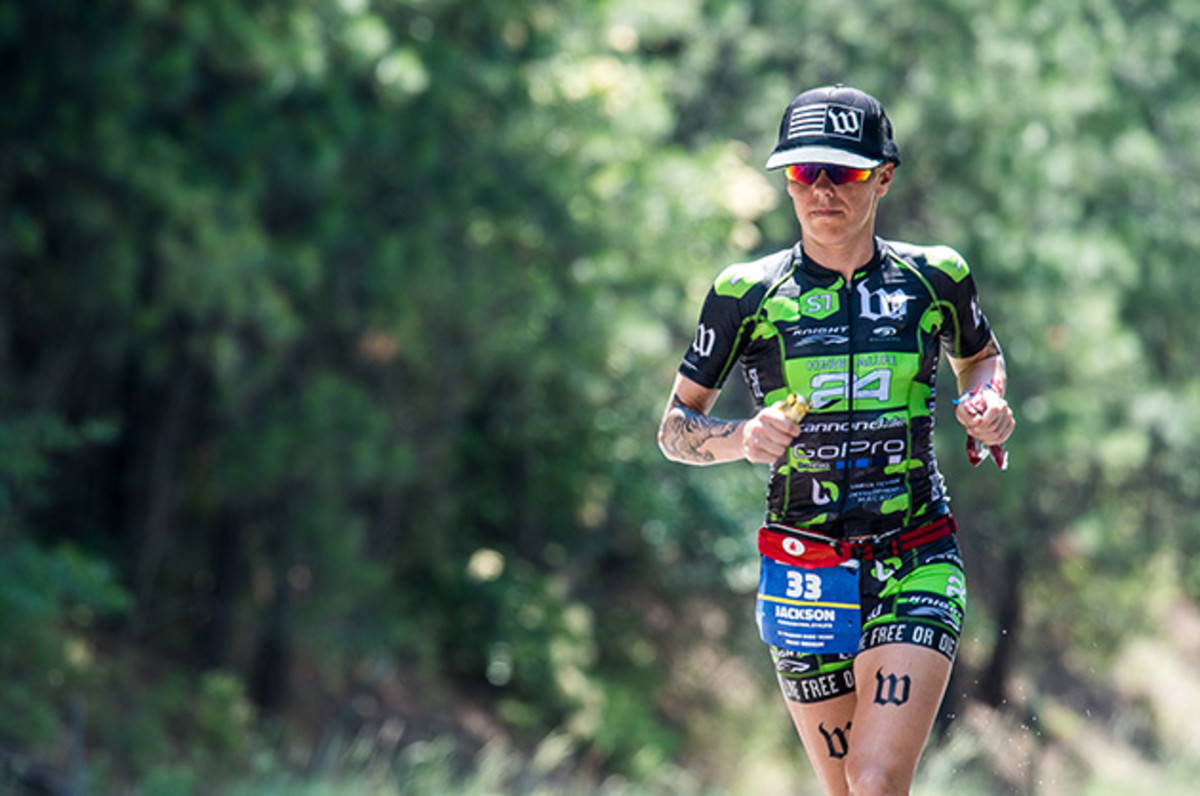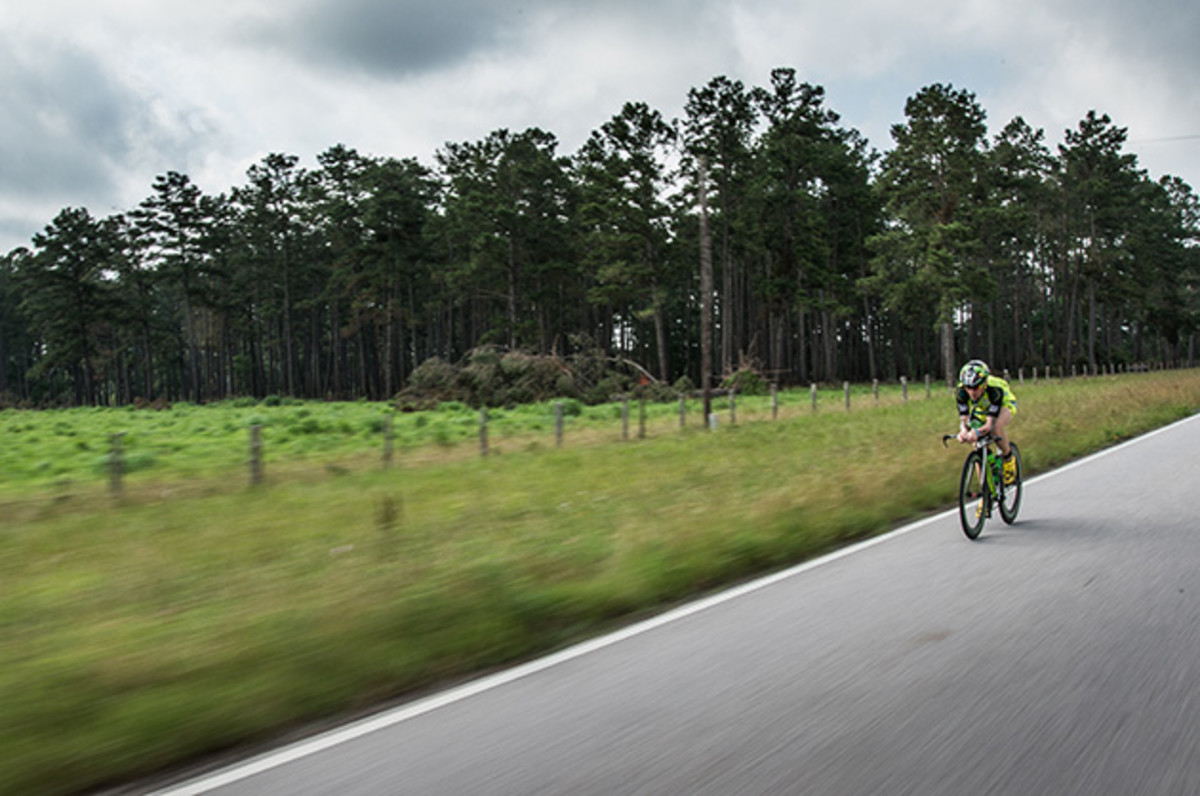Training with Heather Jackson: The triathlete's ultimate workout regimen

This is the first installment in the monthly series "Training with Sports Illustrated," in which SI.com will be featuring the unique training practices of professional athletes in different sports from around the world. With a new athlete every month, keep up to date on the latest trends in sports training and development and learn how to work out like the pros.
From ice to asphalt. At age three and growing up in a family steeped in athletic tradition, New Hampshire native Heather Jackson laced up her first pair of ice skates and began an amateur career that lasted through high school, gradually sculpting her into a four-year D-I hockey player at Princeton.
“I owe my love and passion for exercise and fitness to my parents,” says Jackson, who currently resides in Bend, Ore. “I’m just so grateful to them for giving me so many different opportunities and putting me in so many different sports … but ultimately letting me choose my own direction.”
But while playing hockey on the collegiate level, Jackson got a taste of a different kind of athletic competition during the summer before her senior year when she took part in her first triathlon. That event set her on a completely different road—one that would eventually lead her to become the first U.S. woman to cross the finish line of 2015 Ironman World Championship.

Ink’s Jackson, who crushed the race’s 140.6 miles of hell. Interestingly, this also was her first year racing the competition as a pro. “At the time, it hadn’t sunk in that I had earned fifth [among the women], let alone that I was the first American. I was just so stoked that I had put the entire race together to the extent that I knew I could.”
Jackson recently gave SI.com an inside look into her health-and-fitness lifestyle, what is was like trading in her skates for running shoes, and what it took to complete her transformation into an ultimate triathlete.
Tale of the Tape
AGE | 31 |
|---|---|
HEIGHT | 5' 4" |
WEIGHT | 120 pounds |
HOMETOWN | Exeter, New Hampshire |
JOB | Triathlete |
A conversation with Heather Jackson
On fitness becoming an essential part of her life: “I have been playing sports my entire life—ice hockey, soccer, tennis, softball, basketball, lacrosse, gymnastics, [riding] horses … I literally tried it all. Fitness became essential when I was three or four years old and my parents had to figure out a way to tire out my brother, sister and me—we are all exactly one year apart. We were all super high-energy and I was always competitive in everything, so sports were our outlet.”
Get Healthy in 2016: Dr. Brenda Davy on how to eat better and lose weight
“I was about to enter my senior year at Princeton and still had a year left of ice hockey, but I knew I loved it immediately. I love any sort of competition, but this was so different for me—it was an individual test of myself, only my own capabilities and not the team sports I was used to from soccer and ice hockey. It was just something fresh and new. … I got into triathlon more seriously the year after graduation and my life became all about improving in swimming, biking and running.”
The evolution of her fitness regimens: “Through junior high, high school and college, my fitness regimen was largely based around which sport season it was and what training was needed in my team sports. Playing ice hockey through junior high, high school and college, there were afternoons in the weight room working on strength followed by two- to three-hour practices on the ice working on puck handling, skating skills and overall team tactics. Those years were focused on teamwork and improving as a team as much—or not more—than it was on individual skills and fitness.
“Moving to triathlon after college, my fitness regimen completely shifted to the individual sports of swimming, biking and running, as well as all the related strength, conditioning and body work that complements improvements in those sports.”
Current fitness routine: “Right now, I’m in the off-season, so things are pretty relaxed. I’m just making sure I break a sweat each day and [that I’m] getting back into the pool regularly—that’s my biggest weakness.
“During the season, a standard day is usually an hour to a 1.5-hour swim from 6:45 a.m. until 8:15 a.m. The type of swim varies day-to-day—Mondays, Wednesdays and Fridays are more threshold, longer sets, and Tuesdays/Thursdays [are] sprints or a strength swim.
“Next, is some sort of bike ride, usually three to four hours (unless it’s Saturday—when my rides are five to six hours) and including some sort of efforts: 30-minute efforts with eight times 5-minuteVO2-type efforts in there.

efforts at race pace.
“Mondays and Fridays are my active recovery days, when I swim only, and then make sure to stretch, do my core and strength work, as well as get [a] massage.”
Most essential element for personal performance: Core strength. “In triathlon, you use your core in all three disciplines and it’s so important to be engaging it at so many points in your training. I have a circuit of about 10 different core exercises I do, including situps, planks, V-ups, sit-ups on a ball [and] oblique work with a medicine ball.”
Strongest/least strong muscle groups: “My upper body is pretty weak and it shows in my swimming, so I’ve started incorporating a lot more strength work there—bands, pullups, pushups and some work with free weights.
“My lower body is definitely the strongest, coming off 15 years of playing ice hockey and developing my quads and glutes from skating, as well as years of squats.”
Technology used in training: “I use a watch purely for overall time on my bike rides and to time my efforts, as well as for my runs, to know my time and distance.”
Tech Talk: Inside pro mountain biker Jill Kintner's light therapy rehab
“I used to hate recovery swims, but now I don’t mind them. I often will have a long, hard run on Sunday mornings and head to the pool after for a swim, which is more just an opportunity to flush the legs without any more impact.”
Favorite/least favorite foods: “I love a good steak and sweet potato, and fresh salad. That is my standard meal. There aren’t many foods that I don’t like. I pretty much eat anything.”
On the importance of hydration: “Hydration in triathlon is huge. I’m fortunate enough to have the support of Herbalife, who has products for every situation—drinks with calories/electrolytes for training and racing, drinks with protein and electrolytes for recovery, as well as just a basic, low-calorie hydration drink to stay on top of electrolytes on a day-to-day basis. I train so much that if I get dehydrated at all, it affects the next workout of the day, so I’m constantly drinking and drinking Herbalife24 Hydrate to make sure I never get behind on that.”
On stretching: “Stretching is really important. For me, it’s a process of making sure that my body is feeling as best [it] can in order to maximize the next workout I have [that] day, as well as for the next day and following days. When I’m not physically working out, I’m stretching, foam rolling, getting a massage or any other body work that helps my muscles recover and feel good-to-go for the next training.”
Guilty pleasure: “I love beer. My brother is a brewer in Bend [Ore.] and I think this spawned my interest in good craft beers, initially. But now, I’m hooked and a total beer snob. I love checking out all the local breweries where we travel for races.”
Train Like the Pros
Workout like professional triathlete Heather Jackson by following her step-by-step guide to one-legged box squats.
1: You can use a box if your gym has one, or even a ledge or stair.
2: Put your arms out in front of you at a 90-degree angle to your body.
3: Stand on one leg on the edge of the box, letting your other leg dangle off it to the side.
4: Slowly lower yourself, bending the one leg with your other leg starting to point out in front of you in the same direction as your arms.
5: Engage your core for balance, as well as your glutes.
6: If you haven’t done these in awhile, they can be tough, and I like to build up in the number of reps I can do each week. I also like these because it’s very easy to tell if one side is much weaker or stronger than the other.
